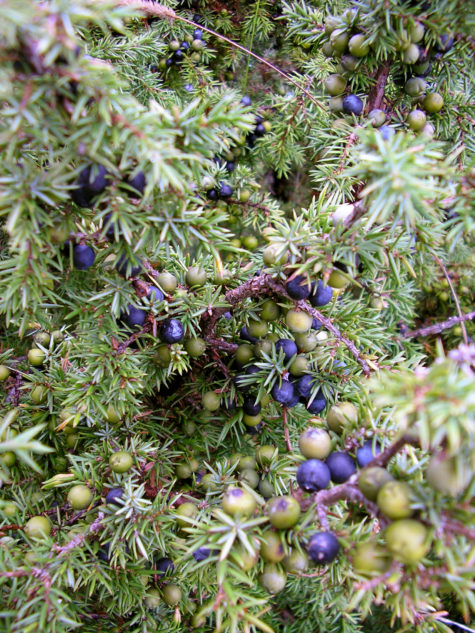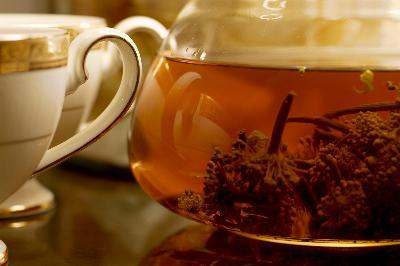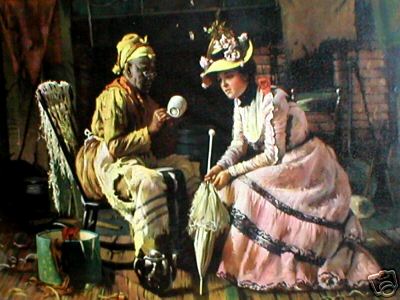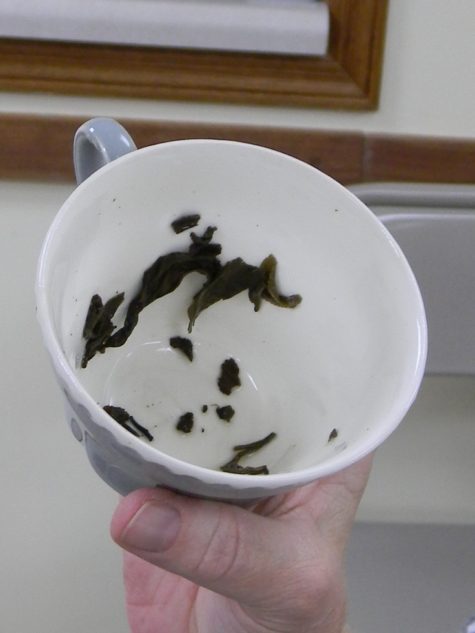Tea
Juniper For Protection
There are many legends and the bible stories connected with the juniper. In a biblical story, Elijah was saved from king Ahab by sheltering under a juniper tree. A Brother’s Grimm story about a Juniper tree can be found here. Romanies say that any animal who seeks sanctuary from the hunter will be safe under a juniper tree.
Make a tea from the berries to cure nerves and indigestion. Allow about a dozen crushed berries per person, pour over them one and a half pints of boiling water and allow to draw for seven or eight minutes. Strain, and sweeten with honey.
The gypsies know juniper berries to have disinfectant qualities which are beneficial to the whole system. They rub their gums with them to promote healthy mouths- this was once an old remedy for scurvy.
More About Juniper
- Common Names: Juniper, Gin Berry
- Latin Name: Juniperus communis
- Parts Used: Leaves, twigs, and berries
- Cultivation: Juniper is a hardy shrub often used as a groundcover. Plant both male and female plants if you want berries.
Culinary Uses: Juniper is the primary flavoring in gin, but it has other culinary uses. Use a few bruised juniper berries in marinades, soups, and stews. Juniper combines well with parsley, fennel, bay, and garlic. Grill meats with a juniper branch or two on the coals; this will give the meat a rich flavor.
Magickal Uses: Juniper is used to protect against thieves, evil forces, accidents, animal attacks, ghosts, and sickness. Juniper burned as incense helps strengthen psychic powers.
Medicinal Uses: Use poultices of juniper to relieve rheumatic and arthritic pains, as well as ulcers and inflammations. Juniper is a diuretic, but it acts by irritating the kidneys, and there are other, safer means available.
- Cautions:
Repeated use of juniper can cause kidney damage, convulsions, and personality changes. It should never be used by pregnant women.
Home Harmony
Prepare a pot of tea (size depending upon the size of the family, as you will see) made from valerian root herb (Valeriana officinalis).
The cut and sifted form of the herb is most useful, since it can be easily strained through a regular tea strainer. Dried herbs can be used, but fresh herbs are better. Use about an ounce of herb to a pint of water. The herb should be broken up in a pestle and mortar to release the active principles. Since valerian is one of the deeper essences, you may need to simmer the tea for about an hour, after which time about half the water will have evaporated. Incidentally, do not use an aluminum vessel. Use glass (Pyres), earthenware, enamel, or stainless steel.
When ready, pour into a teapot and top up with hot water. Then with everyone sitting in a circle, the mother should pour a cup of tea for each family member; but make sure that at least half the tea is left in the pot (this is where the size of the pot comes in). All drink their tea. Then take what remains in the teapot and sprinkle a little of the tea in every corner of every room in the house; in the corners of the rooms and alcoves, and in the corners of all the larger closets (such as clothes closets and pantries).
When this has been done, all the family members should stand in the kitchen with hands joined, and the mother, or eldest female, should say:
Peace be unto this house
And peace be with all who dwell herein.
Let harmony be forever here,
And let love abound.
~Raymond Buckland
Body Cleansing Tea
This tea is for clear skin, to promote the immune system, and the help remove toxins from the bloodstream.
- 3 tsp chopped young nettle leaves
- 1 tsp parsley
- ½ tsp lavender flowers
- juice of ½ a lemon
Note:
This blend is for one person and is intended to have half a pint of boiling water poured over it. Allow the infusion to stand for 10 minutes before straining and do not stir, as this bruises the plants. Obviously, you can adjust the amount of water or standing time to your own taste. If you prefer your tea sweet, add a little honey, not sugar, to the strained infusion.
Source: Tami Brown
Gypsy Cure for Indigestion
More About Tea Leaves
In the old days, a Romany woman would read a housewife’s tea leaves in exchange for a refreshing cuppa and a few old clothes. Sometimes a Gypsy Queen, dressed in her finest and laden with all her jewelry, would preside over a special tea-drinking party for a few favored clients. The best bone china and lace tablecloth would be brought out to impress upon the Rawnies (ladies) the importance of the occasion – and how privileged they were to be invited. No doubt the fee for the teacup-reading was suitably increased to fit the occasion.
It is not only tea leaves that can be used for this type of reading: coffee and cocoa grounds, or anything that leaves a sediment in the cup, can be used in the same way. If you prefer teabags, you can of course break open the bag before making the tea in the usual way. This should ensure that a good pattern is left in the cup, but if you do take the trouble to make a good old-fashioned pot of loose-leafed tea, you will also have the extra bonus of a truly satisfying taste.
One drawback with reading the teacups is that is is all too easy to fall into the habit of reading the cups at every tea break, which tends to belittle this method and turn it into a parlour game. But as long as it is used with respect it will give excellent results.
Most authorities state that the cup should be plain white and shallow, but I have never found that the shape of the cup was important, nor that a patterned cup adversely affected the reading. Indeed, Romanies have always disliked plain white china, preferring it to be richly decorated.
From Gypsy Magic by Patrinella Cooper
Note:
More information on Tea Leaf divination can be found here: Divination – Reading Tea Leaves
Reading Tea Leaves – Basic Instructions
The enquirer should drink their tea until only a spoonful or so is left in the bottom of the cup. They should hold the cup in the left hand and swirl it around three times in an anti-clockwise direction, then turn it upside down to drain. The cup is then passed to the person who is to read it.
Prepare to do the reading by quietening the mind. Hold the cup with the handle in your right hand, or you can hold it in both hands if it feels more comfortable. The brain likes to make pictures out of abstract blobs, which is why we see faces in stained walls or castles in clouds. It is this principle that inspires the psyche to see omens in the tea leaves. Move the cup about if it helps you to see the patterns clearly. It can also help if you let your eyes go slightly out of focus.
The leaves should be read in a kind of spiral motion working anti-clockwise from the handle around the rim, back to the handle, then the sides, and finally the bottom of the cup. As a general rule, the nearer to the rim of the cup a symbol appears, the sooner the event will be. The larger the symbol, the greater will be the impact on the enquirer’s life.
From: Gypsy Magic
by Patrinella Cooper
Note:
More about reading tea leaves can be found here: Divination – Reading Tea Leaves
It’s About Thyme
Thyme is another herb the Romanies made good use of. It’s very good for the nerves! Also it has antiseptic properties. Did those of you who have gargled with a thymol preparation realize that it was made from thyme? It is good, too. as a general tonic.
Thyme, especially wild thyme, is known by the gypsies as Mother`s thyme, because a tea made from it gives relief to the cough that sometimes troubles expectant mothers. Make it with fresh or dried thyme – for each ounce of fresh herb, substitute just one teaspoonful of the dried.
Thyme tea helps any chest complaint that causes any difficulty with breathing- asthma sufferers would find it useful. In fact, thyme tea mixed with linseed and honey is a wonderful medicament for coughs and catarrh. It`s also good for headaches and giddiness – particularly if the headache is one of those that grips you on the morning after the night before!
And if nightmares are your trouble, try drinking it before you go to sleep because it soothes the nerves and induces peaceful rest..
Thyme is one of the handiest herbs you can keep in your kitchen because it can be used as part of a bouquet garni, in soups, with baked eggs, egg salad, with roast chicken, mussels, scallops, lamb stew, roast veal and in creamed cheese dishes. Try sprinkling a little thyme over a cabbage salad or in a plate of potato or tomato soup. Thyme is also very good in pancakes.
Gypsy Cures for Coughs and Colds
 The Romany culture was rich in cures for coughs and cold. Some suited one, and some suited another. Here are some authentic Gypsy cures for the common cold. (As always, use common sense when trying the remedies, and consult your doctor if you are seriously ill. Remember these cures are from times long past.)
The Romany culture was rich in cures for coughs and cold. Some suited one, and some suited another. Here are some authentic Gypsy cures for the common cold. (As always, use common sense when trying the remedies, and consult your doctor if you are seriously ill. Remember these cures are from times long past.)
First, some of the simplest remedies which are easy to try. Did you know, for instance, that the vinegar from a jar of pickled walnuts is a very good gargle for sore throats? Do not throw it away, keep it in an airtight jar until it is needed. If you have a hard cough, beat the white of an egg to a froth, then add a tablespoonful each of vinegar and sugar. Drink this at bedtime, and the cough will not trouble you during the night.
If you have a dry cold, drink peppermint tea and it will almost immediately ease your symptoms. And if your friends are scared of catching it from you, or you wish to keep your family free from infection, tell them to rub a little peppermint oil under the nose and round the throat, and to take a small dose as well, it is an antiseptic and a strong preventative of disease.
Try drinking a glass of hot milk at night with a crushed clove of garlic in it. This is very good for both coughs and colds, and will give some relief asthma sufferers.
Horseradish is another good remedy for sore throats and coughs-even whooping cough. Scrape a half a teacupful of horseradish, add a little vinegar to thoroughly soak it. Keep pressing it down so that the horseradish is always just covered by the vinegar. Leave for the day. Then add one tablespoonful of glycerin and mix. take a half of a teaspoonful in a wineglass of hot water. Incidentally, horseradish will also help to alleviate that annoying catarrhal deafness that can come with a cold. Take one ounce of the grated root, pour one pint of boiling water over it and let it stand for 15 minutes. Strain, and take 4 tablespoonfuls twice a day. If you don`t like the flavor, mix it with syrup of ginger or caraway.
If you want to stop a cold in the early stages, make an infusion of the herb basil in the proportion of 1 teaspoonful of the dried herb to 1 cupful of boiling water. This will promote perspiration and drive out the cold.
If you have access to an elderberry tree, its berries and flowers will quickly help to dispel your discomfort. Store elderflowers after drying them out in the sun, and you can make a healing beverage at any time by pouring boiling water over them and adding a little sugar. The Romanies claim that it puts paid to a head cold if taken immediately the first signs are noticed. This infusion is also soothing and will help to give a good night`s sleep. It will also calm the nerves.
For more Elderberry remedies for colds and flu check out the following at Folk Medicine Remedies and Cures:
The Romanies also found Borage a very good plant for medicinal purposes. An infusion helps coughs, a poultice of Borage leaves is good for inflammation, and if you are suffering from the slight fever that sometimes accompanies a cold or flu germ, put a sliced lemon and about six sprigs of the herb in a jug and cover with boiling water. Drink when cold, it will reduce the feverish symptoms.
Another cold preventative is feverfew. Make the leaves into a tea and it will not only guard against colds, but also flatulence and hysteria.
If you stew barberry berries with a little water until they are soft, then squeeze them through a strainer, pressing out all the juice with a wooden spoon and add three pints of water to one of juice, you will have an excellent drink which, if taken hot at night, will induce the perspiration that drives out a cold
If you are not sure whether it`s a cold or flu coming on, don`t hesitate, infuse 1 oz of fresh or dried balm with a pint of boiling water and take it very hot, last thing at night. It will drive out a cold and arrest an attack of influenza – but you should take it in good time when you feel the first symptoms coming.
Red clover is one of Nature`s best remedies for sore throats and chest troubles. It will also help a bad cough that sometimes accompanies a cold. It grows in fields and by waysides up to a foot in height, and even larger when cultivated. As an infusion it is good for sufferers with bronchitis and asthma. For a bad cough, prepare this syrup. Make a syrup of loaf sugar and water, add fresh red clover leaves in the proportion of an ounce to a pint of syrup. Boil and strain, Bottle and cork the bottle tightly, and take a teaspoonful twice or three times a day.
Ground ivy is a plant that grows on waste ground and in hedgerows everywhere, the leaves are dark and kidney shaped and the flowers bright dark blue. The Romanies made a tea from ground ivy flowers and wood sage as a cure for fevers and colds. The herb is used by herbalists in the treatment of blood and kidney disorders.
In Victorian times, children ate horehound candy as a cure for sore throats and coughs. The plant has a vine-like scent. It is a good remedy for diseases of the chest and lungs and has the added advantage of being a good tonic. If your cold brings on bronchitis, make a brew of horehound tea and you will find that a wine glassful three times a day is a great relief. If you mix it with a little honey, it is more pleasant to take. Black horehound is not used much in herbal practice, but it was once used as a tonic tea by country workers. Horehound, in fact, is often used by herbalists as a remedy when combined with hyssop.
Oil of hyssop is sweet scented and used in the making of some eau de colognes. It was also used by the monks when they made Chartreuse Liqueur.The plant originated in Italy, but can easily be grown in English gardens and it is a very useful plant to have handy as it is a good remedy for coughs and lung complaints. Make an infusion of 1 oz of leaves to 1 pint of water and take frequently.
Comfrey is a well known remedy for lung disorders. Put half an ounce of the crushed root in a saucepan with a pint and a half of milk and water mixed in equal parts and simmer for 20 minutes. A wine glassful will quickly ease an irritating cough. If you use only one pint of milk and water mixture the remedy will form into a jelly which also eases coughs. Grow comfrey in your garden, the root can be boiled as a vegetable and the young shoots blanched and cooked like celery.
The coltsfoot is another wonderful remedy for coughs and colds, whooping cough and shortness of breath. It has a little yellow flower that smells of honey and blooms in February, long before the leaves which grow to enormous size. Coltsfoot grows nearly everywhere, on rubble heaps, by the side of newly-made roads, on railway banks and on coal mine tips. In fact there is a very old gypsy saying that wherever coltsfoot grows freely, coal will be found. Once it was so revered in France that a painting of a coltsfoot flower appeared on the doors of all doctors as a sign that the art of healing was practiced there. The Romanies praise this herb very highly.
A decoction of the leaves of the herb coltsfoot to a pint of boiling water is very good for colds, coughs and asthma. If you haven`t time to make a decoction when a cough is bad, use an infusion of coltsfoot and take in teacupful dose.It can be sweetened to taste with honey.
Another old Romany recipe to soothe any cough is made with liquorice root, coltsfoot and lemon. Simmer 1 oz of liquorice root in 3 pints of water till it is reduced to 1 pint. Put 1 oz of coltsfoot and a sliced lemon into a jug and add the decoction. Stir well, sweeten with honey,allow to get cold, then drink as required.
If you have the hacking cough of a heavy smoker this remedy will disguise your weakness. Put two ounces of sunflower seeds into a saucepan with a quart of water, and an inch or so of whole ginger. Simmer until reduced to a pint and a half. Add sugar or honey to taste. When cold, strain. A tablespoon of whisky will help the drink to stay fresh; if it is not added, it should be made fresh every two or three days. This is an excellent decoction to relieve bronchitis or a hacking cough.
Disclaimer: The author of this site is not Doctor or medical certified professional, the information presented here is for informational purposes only and should not be taken as medical advice.












